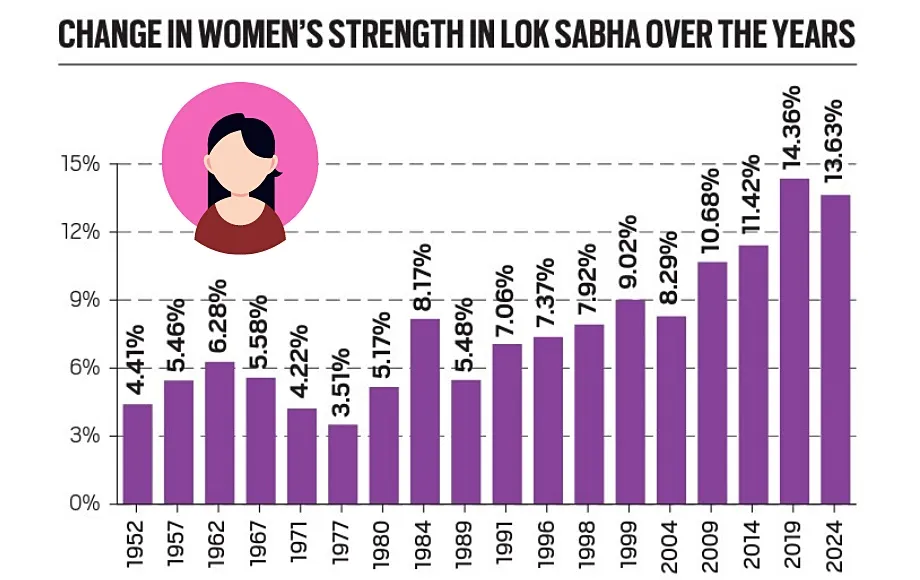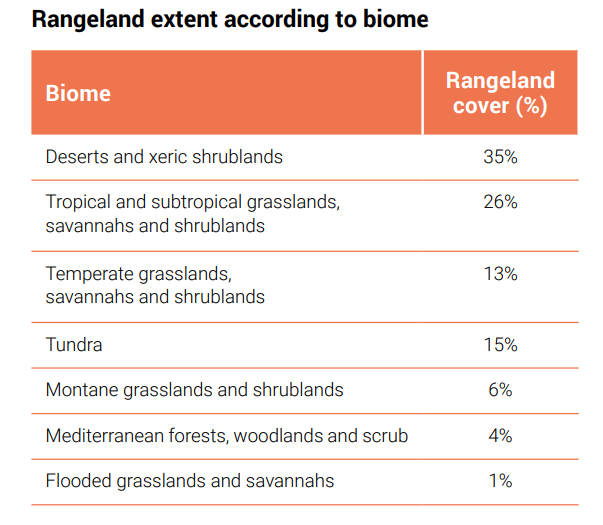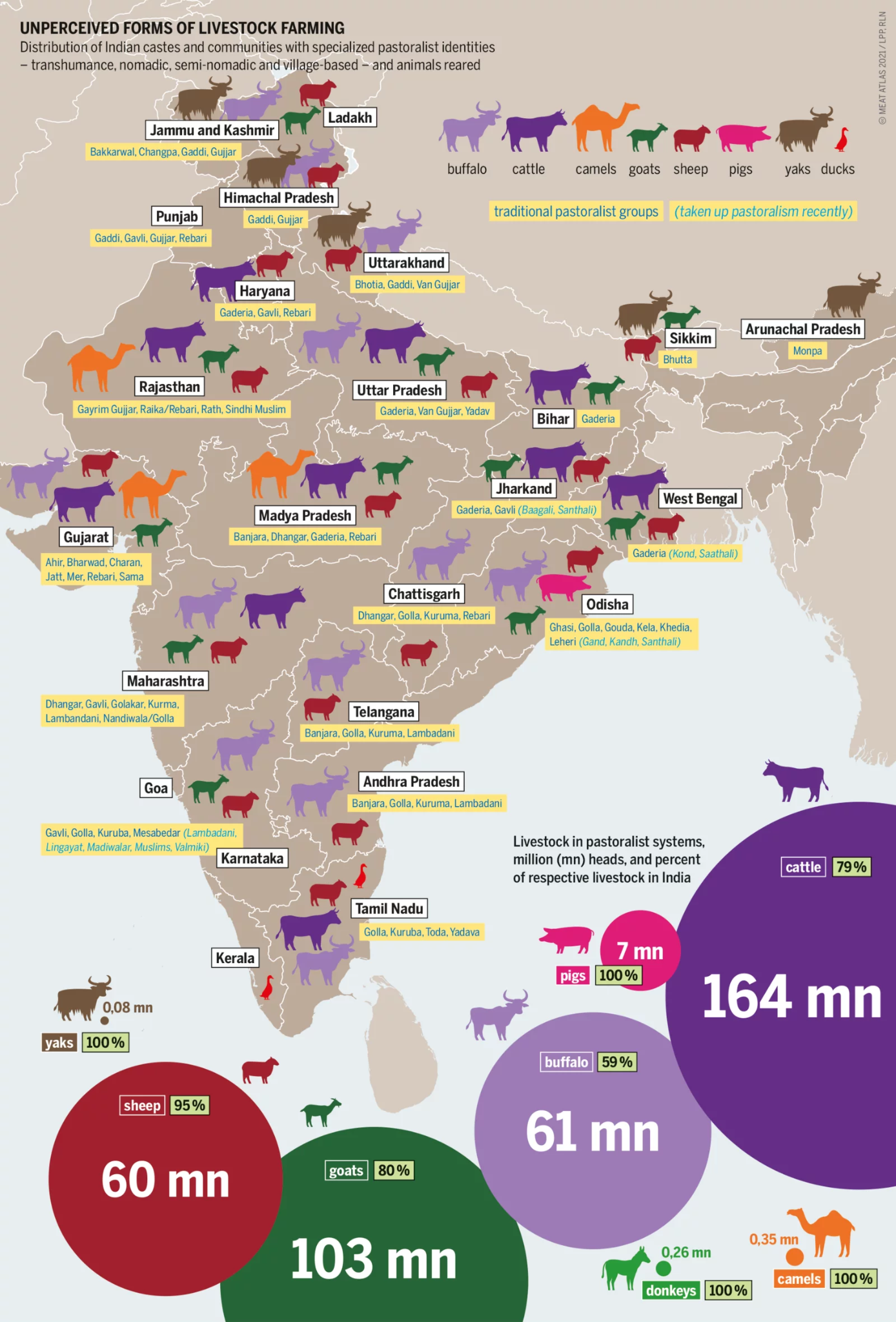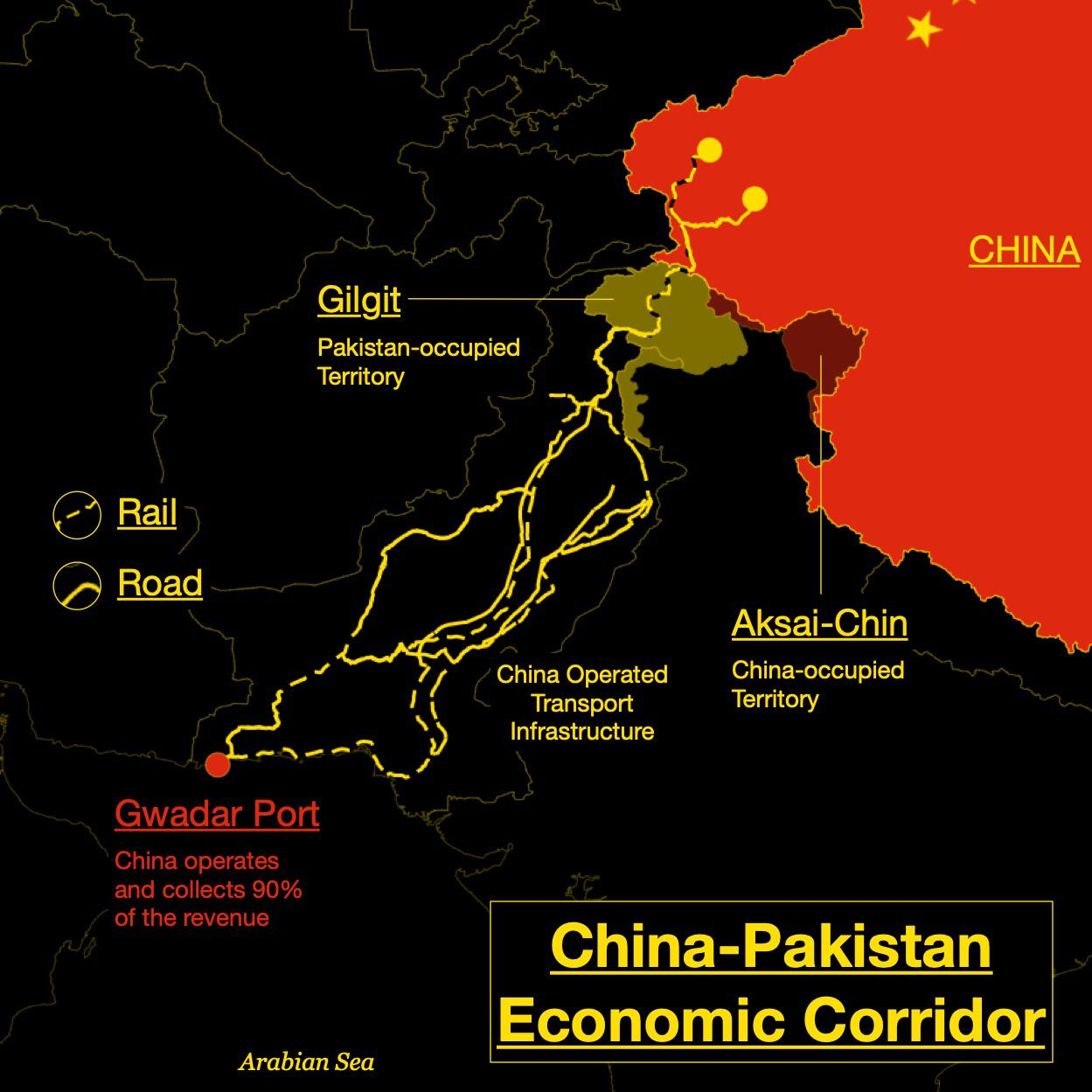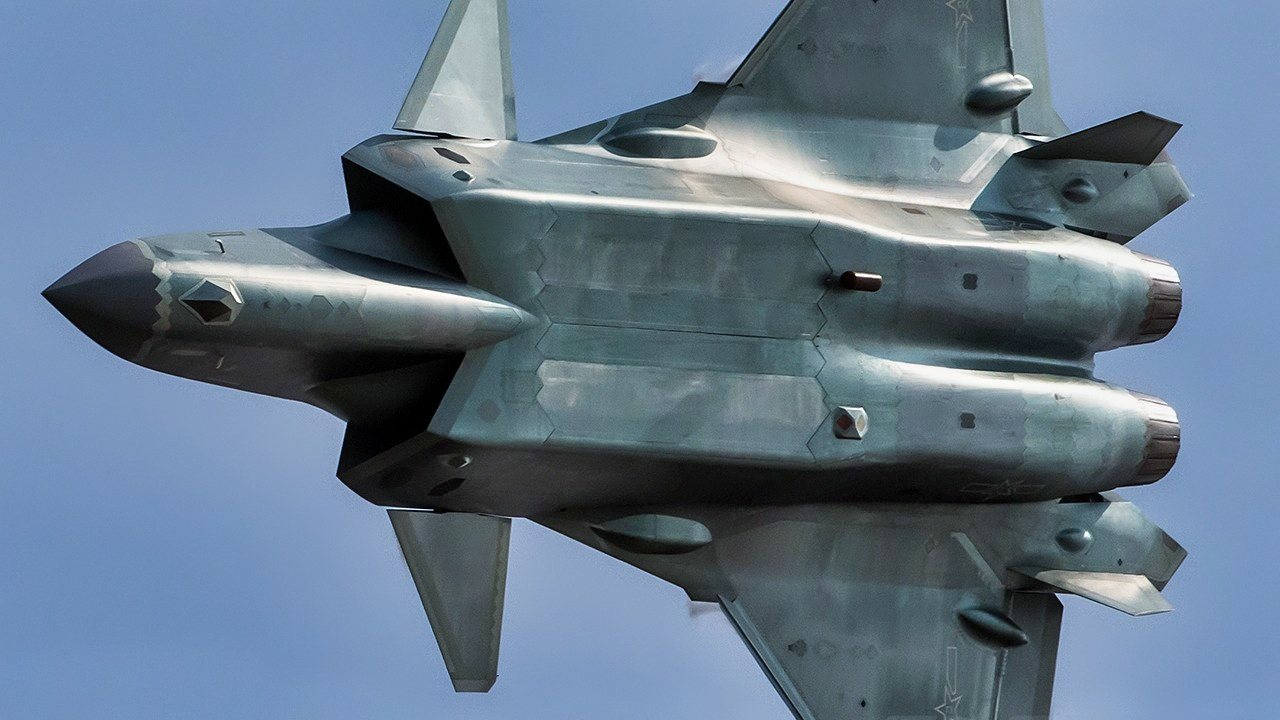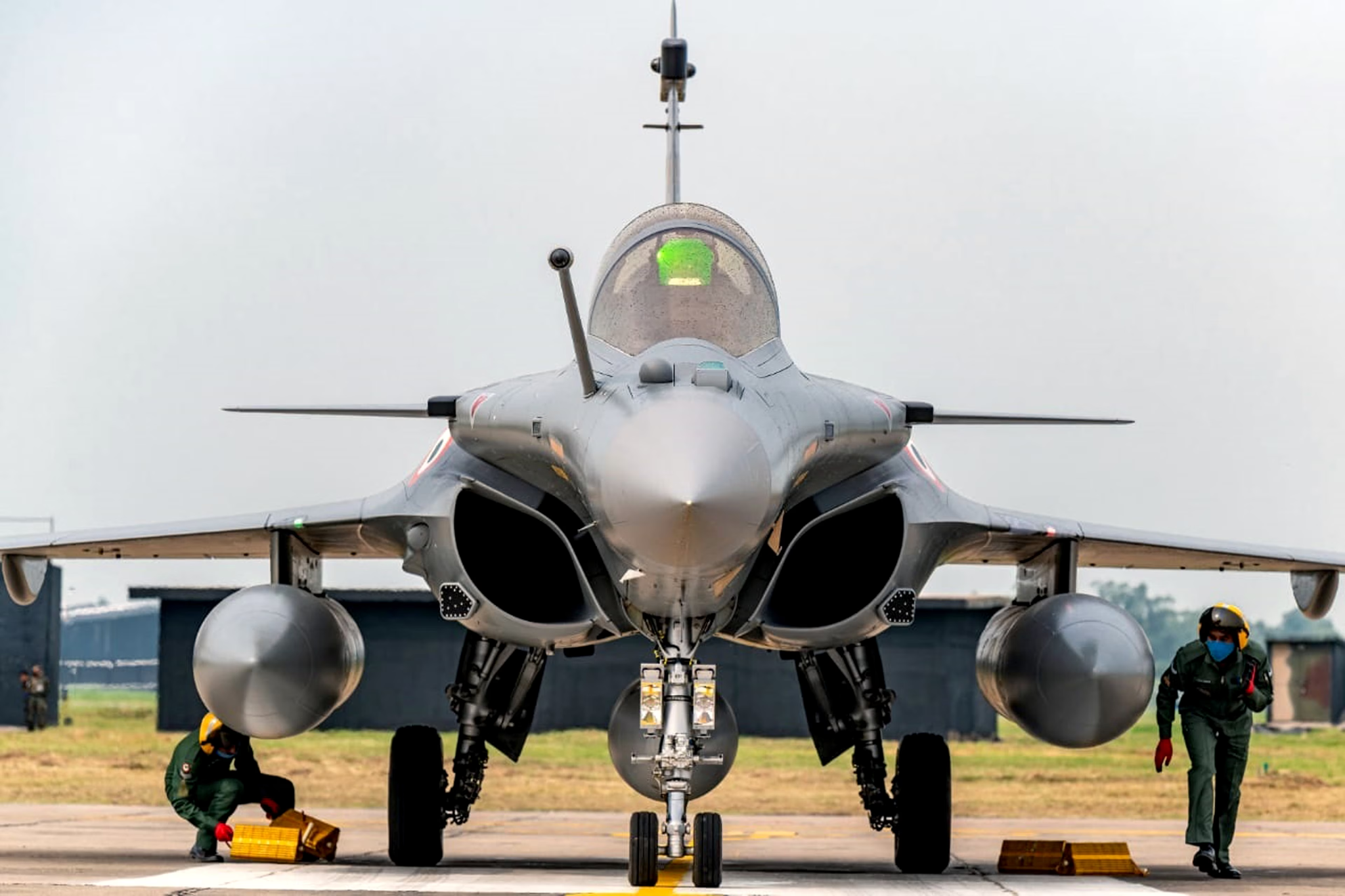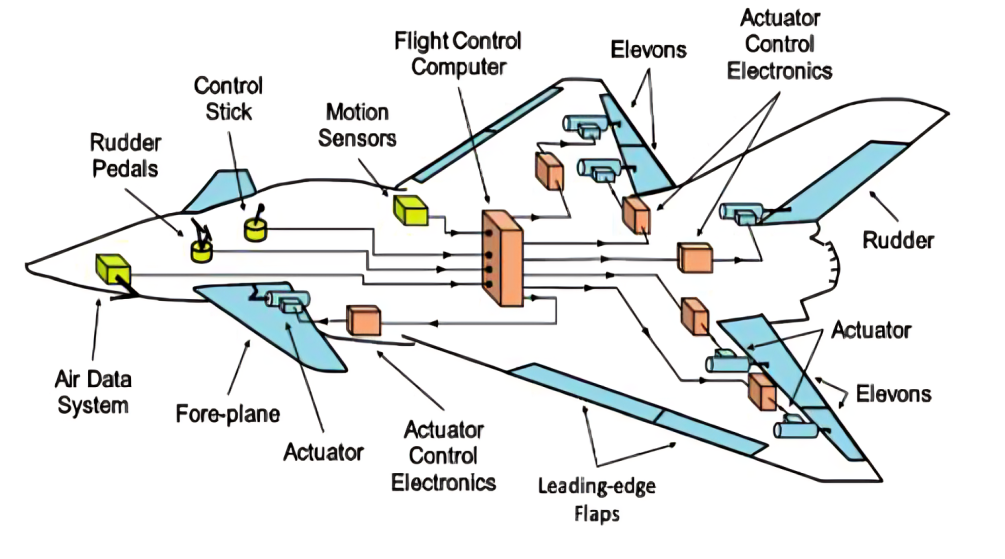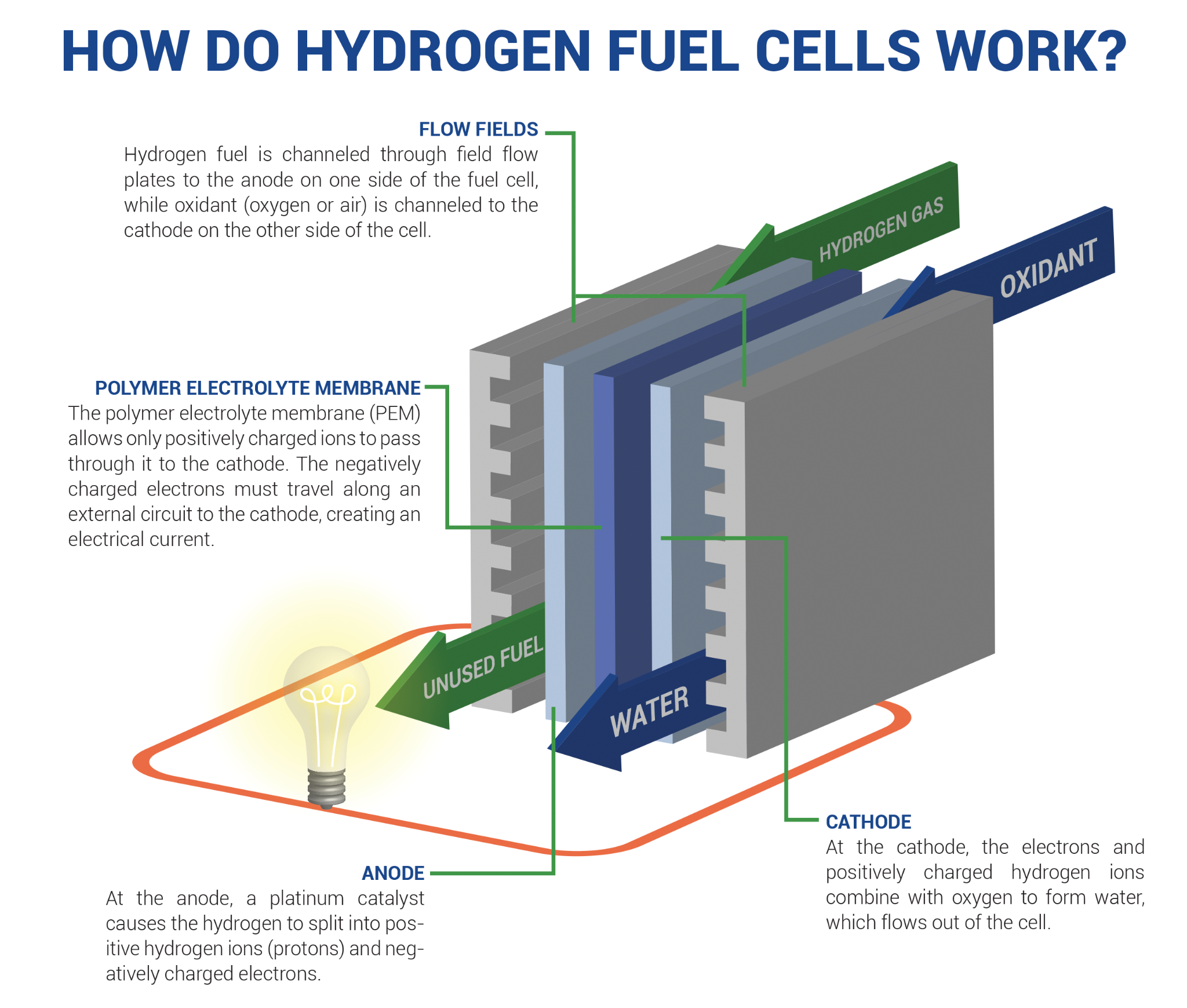Indian Polity
General Election 2024 and Coalition Government
For Prelims: Coalition government, Economic reforms, Federal system, Fiscal Responsibility & Budget Management (FRBM), PM Gram Sadak Yojana, Information Technology Act, 2000, Right to Education Act, Right to Information Act, Right to Food, Mahatma Gandhi National Rural Employment Guarantee Act (MGNREGA), Aadhaar, GST
For Mains: Merits and Demerits of coalition government, Challenges of coalition governments
Why in News?
Recently, for the first time since 1962, a government has returned for a third term after completing two consecutive terms spanning a decade.
- However, the result signifies the end of single-party dominance and heralds the return of a true coalition government at the Centre.
What is a Coalition Government?
- About:
- Coalition government is defined as when several political parties join hands to form a government and exercise political power based on a common agreed programme.
- Coalitions usually occur in modern parliaments when no single political party gets clear majority.
- If several parties with a majority of elected members can agree on a shared plan without compromising too much with their policies, they can form a government.
- Features Of Coalition Government:
- A coalition implies the existence of at least two parties to form government.
- Pragmatism and not ideology mark of coalition politics.
- Coalition politics is not a static but a dynamic affair as coalition players and groups dissolve and form new ones.
- A coalition government works based on a minimum programme, which may not satisfy aspirations of all the members of the coalition government.
- A coalition implies the existence of at least two parties to form government.
- Pre-poll and Post-poll Coalition:
- The pre-poll coalition is considerably advantageous because it provides a common platform for the parties to woo the electorate based on a joint manifesto.
- The post-election union is intended to enable constituents to share political power and run the government.
Recommendations of Punchhi and Sarkaria Commission on Coalition
- Punchhi Commission Recommendation: The Punchhi Commission established clear rules for how Governors should handle appointing Chief Ministers in hung assemblies. These guidelines hold true for President as well:
- The party or combination of parties which commands the wide support in the Legislative Assembly should be called upon to form the Government.
- If there is a pre-poll alliance or coalition, it should be treated as one political party and if such coalition obtains a majority, leader of such coalition shall be called by the Governor to form the Government.
- In case no party or pre-poll coalition has a clear majority, Governor should select the Chief Minister in the order preference indicated here.
- The group of parties which had pre-poll alliance commanding the largest number
- The largest single party staking a claim to form the government with the support of others
- A post-electoral coalition with all partners joining the government
- A post-electoral alliance with some parties joining the government and the remaining including independents supporting the government from outside
- The Sarkaria Commission had found that problems in Indian federalism came from a lack of consultation and dialogue between the Centre and states.
- It was found that the interstate council worked whenever regional political parties had a major role to play at the national level. This signifies the role of coalition government in which regional parties plays an important role.
Other Development in 2024 General Election
- Women:
- India has elected 74 women MPs to Lok Sabha in the 2024 general election four less than in 2019 and 52 more than in India’s first elections in 1952.
- These 74 women make just 13.63% of the elected strength of the Lower House compared to 46% of MPs in South Africa, 35% in the UK, and 29% in the US.
- Indira Gandhi has been India’s first and only woman Prime Minister.
- NOTA:
- In Indore the “None Of The Above” (NOTA) received more than 2 lakh votes.
- This is the highest-ever NOTA number for any Lok Sabha constituency ever.
- The NOTA option was introduced for the first time in the general elections in 2014.
- NOTA has no legal consequence attached to it as even if the highest number of votes in a seat are polled for NOTA, the second most successful candidate wins.
- In Haryana, NOTA has been treated as a fictional candidate.
- In Indore the “None Of The Above” (NOTA) received more than 2 lakh votes.
What are the Merits and Demerits of the Coalition Government?
- Merits:
- A coalition government brings together different parties to make decisions that are balanced and satisfy interests of various stakeholders.
- India's diverse cultures, languages, and groups make coalition governments more representative and reflective of popular opinion than single-party governments.
- Coalition politics strengthens India's federal system by being more attentive to regional needs than a single-party government.
- Demerits:
- They are unstable because disagreements on policy issues among coalition partners can cause the government to collapse.
- In a coalition government, the Prime Minister's authority is restricted as they must consult with coalition partners before making significant decisions.
- The Steering Committee, like a 'Super-Cabinet' for coalition partners, diminishes the authority of the cabinet in governing.
- Smaller parties in a coalition government might have significant influence by demanding more than their fair share of power in Parliament.
- Leaders of regional parties influence national decisions by advocating for issues specific to their regions, exerting pressure on the central government to align with their interests under the threat of coalition withdrawal.
- In a coalition government, the Council of Ministers tends to be larger due to the interests of all major parties in the coalition.
- In coalition governments, members often avoid taking responsibility for mistakes by blaming each other, thus avoiding both collective and individual accountability.
What has been the Role of Coalition Governments in Reforms?
- Historical Context:
- Since 1991, India experienced coalition governments where the leading party was far from the majority mark of 272.
- Coalition governments have implemented some of the boldest economic reforms in India’s history.
- Notable Reforms by Previous Coalition Governments:
- P V Narasimha Rao Government (1991-1996):
- Economic Liberalisation (LPG Reforms): Liberalised the economy by removing the licence-permit raj and embraced global competition.
- WTO Membership: India became a member of the World Trade Organisation, integrating more deeply into the global economy.
- Deve Gowda Government (June 1996-April 1997):
- Dream Budget: Finance Minister was known for reducing tax rates, and fostering a more favourable economic environment for taxpayers and businesses.
- Atal Bihari Vajpayee Government (March 1998-May 2004):
- Fiscal Responsibility & Budget Management (FRBM) Act: Introduced fiscal discipline by limiting government borrowing.
- Disinvestment and Infrastructure: Pushed for disinvestment of loss-making PSUs and improved rural infrastructure through schemes like the PM Gram Sadak Yojana.
- Information Technology Act, 2000: Laid the groundwork for the booming e-commerce sector in India.
- Manmohan Singh Government (2004-2014):
- Rights-Based Reforms: Various reformative measures were brought in like the Right to Education Act, the Right to Information Act, the Right to Food, and the Mahatma Gandhi National Rural Employment Guarantee Act (MG-NREGA).
- Economic Deregulation: Deregulated fuel prices, initiated direct benefit transfers, and worked on the Aadhaar and GST systems.
- P V Narasimha Rao Government (1991-1996):
Conclusion
- Despite the inherent challenges, coalition governments offer a platform for diverse voices and can foster consensus-driven policies.
- A well-functioning coalition, built on a foundation of mutual respect, strong leadership, and a commitment to national progress, can navigate the complexities of a vibrant democracy.
- Justice M N Venkatachaliah commission report has suggested the idea of a permanent coalition.
- The report suggested it would be best if all governments in India, at all tiers, mandatorily accomplish a 50-plus vote share.
- With this recommendation, Justice Venkatachaliah meant that only a government with a 50-plus % vote share would have the necessary legitimacy to govern.
|
Drishti Mains Question: Q. Discuss the challenges and implications of coalition governments in the Indian context. |
UPSC Civil Services Examination, Previous Year Question (PYQ)
Prelims:
Q. With reference to Deputy Speaker of Lok Sabha, consider the following statements: (2022)
- As per the Rules of Procedure and Conduct of Business in Lok Sabha, the election of Deputy Speaker shall be held on such date as the Speaker may fix.
- There is a mandatory provision that the election of a candidate as Deputy Speaker of Lok Sabha shall be from either the principal opposition party or the ruling party.
- The Deputy Speaker has the same power as of the Speaker when presiding over the sitting of the House and no appeal lies against his rulings.
- The well-established parliamentary practice regarding the appointment of Deputy Speaker is that the motion is moved by the Speaker and duly seconded by the Prime Minister.
Which of the statements given above are correct?
(a) 1 and 3 only
(b) 1, 2 and 3
(c) 3 and 4 only
(d) 2 and 4 only
Ans: (b)
Mains:
Q. To what extent, in your view, the Parliament is able to ensure accountability of the executive in India? (2021)
Q. How far do you think cooperation, competition and confrontation have shaped the nature of federation in India? Cite some recent examples to validate your answer. (2020)

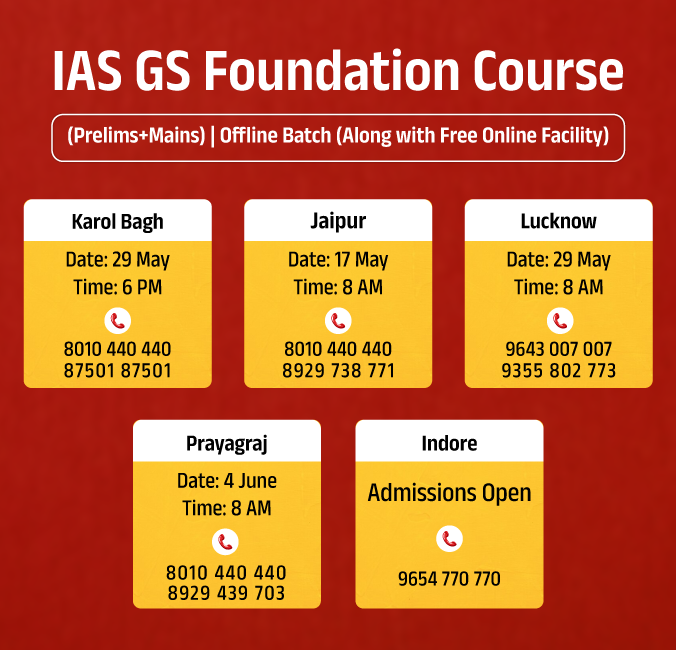
Economy
Rangelands and Pastoralism
For Prelims: United Nations Convention to Combat Desertification Data, UN Convention to Combat Desertification (UNCCD), Land Degradation.
For Mains: United Nations Convention to Combat Desertification Data, Environmental pollution and degradation.
Why in News?
Recently a UN Convention on Combating Desertification (UNCCD) report on rangelands and pastoralists has said that millions of pastoralists in India need better recognition of their rights and access to markets.
Note
- Rangelands: Rangelands are vast natural landscapes primarily used for grazing livestock and wildlife. They are dominated by grasses, shrubs, and open-canopy trees.
- Pastoralists: Pastoralists are people who raise livestock on natural pastures. They often lead a nomadic or semi-nomadic lifestyle, moving their herds seasonally to access fresh pastures and water sources.
United Nations Convention to Combat Desertification (UNCCD)
- It was established in 1994, as a sole legally binding international agreement linking environment and development to sustainable land management.
- It addresses specifically the arid, semi-arid and dry sub-humid areas, known as the drylands, where some of the most vulnerable ecosystems and peoples can be found.
- The Convention’s 197 parties work together to improve the living conditions for people in drylands, to maintain and restore land and soil productivity, and to mitigate the effects of drought.
- The UNCCD works with the other two Rio Conventions to address the interlinked challenges of land, climate and biodiversity:
- Convention on Biological Diversity (CBD)
- United Nations Framework Convention on Climate Change (UNFCCC)
- United Nations Conference on Sustainable Development (Rio+20)
- UNCCD 2018-2030 Strategic Framework
- Conference of the Parties (COP)
What are the Key Findings of the UNCCD Report?
- State of Rangelands:
- Rangelands cover 80 million square kilometres, which is 54% of the earth surface, constituting the largest land cover/use type in the world. Of this:
- 78% occur in the drylands, mainly in the tropical and temperate latitudes
- 12% is protected rangelands worldwide.
- Around 40-45% of these lands are degraded, posing a threat to one-sixth of the world's food supply and one-third of the planet's carbon reservoir.
- Rangelands generate 16% of global food production and 70% of feed for domesticated herbivores, most significantly in Africa and South America.
- Degradation of Rangelands: Almost half of the world’s rangelands are degraded due to climate change, population growth, land-use change and growing farmlands.
- In India, rangelands occupy about 1.21 million square kilometres, from the Thar Desert to Himalayan meadows.
- As per report, less than 5% of India's grasslands are within protected areas, and the total grassland area decreased from 18 million hectares to 12 million hectares between 2005 and 2015.
- The area used for grazing is estimated at around 40% of the total land surface of India.
- Rangelands cover 80 million square kilometres, which is 54% of the earth surface, constituting the largest land cover/use type in the world. Of this:
- State of Pastoralist and Economic Contributions in India:
- Globally, an estimated 500 million pastoralists are involved in livestock production and allied occupations.
- There are around 13 million pastoralists in India, across 46 groups including Gujjars, Bakarwals, Rebaris, Raikas, Kurubas, and Maldharis.
- According to the 2020 report "Accounting for Pastoralists in India," India holds 20% of the world's livestock population and approximately 77% of the animals are raised in pastoralist systems, where they are either herded or allowed to graze on common lands.
- Pastoralists contribute to the economy through livestock rearing and milk production.
- The livestock sector contributes 4% to the national GDP and 26% to the agricultural GDP.
- The report highlighted that laws, such as the Forest Rights Act of 2006, have aided pastoralists in securing grazing rights across various states in the country.
- One notable success mentioned was the Van Gujjars obtaining grazing rights and land titles in Rajaji National Park in Uttarakhand, following a High Court judgement.
- India is currently the world's largest producer of milk, contributing 23% of global dairy production. It also leads in buffalo meat production and is the top exporter of sheep and goat meat, as reported by the Department of Animal Husbandry and Dairying. Pastoralists play a significant role in these sectors.
What is Pastoralism?
- About:
- According to the UN’s Food and Agriculture Organization (FAO), pastoralism is a livelihood system based on livestock production.
- This includes livestock rearing, dairy production, meat production, wool production, and leather production.
- Characteristics:
- Mobility: Pastoralists often move with their herds to access seasonal pastures and water sources. This mobility helps manage the sustainability of grazing resources and reduces overgrazing in any one area.
- Example: Bedouin tribes of the Arab region wander with their herds in search of water and green pastures.
- Animal Husbandry: The care and management of livestock are central to pastoralist life. This includes breeding, feeding, and protecting animals from predators and diseases.
- Cultural Practices: Pastoralist communities often have rich cultural traditions, including specific social structures, rituals, and knowledge systems related to animal husbandry and the environment.
- Economic Systems: Livestock is a crucial economic asset for pastoralists, providing food (meat, milk), materials (wool, hides), and trade goods. Some pastoralist communities also engage in trade or supplementary farming.
- Adaptation to Environment: Pastoralist practices are closely adapted to their environments, employing traditional ecological knowledge to make decisions about movement and resource use.
- Mobility: Pastoralists often move with their herds to access seasonal pastures and water sources. This mobility helps manage the sustainability of grazing resources and reduces overgrazing in any one area.
- Examples of Pastoralists Communities:
- Gujjars (Jammu and Kashmir, Himachal Pradesh, Rajasthan, and Uttar Pradesh), Raikas/Rebaris (Rajasthan and Gujarat), Gaddis (Himachal Pradesh), Bakarwals (Jammu and Kashmir), Maldharis (Gujarat), Dhangars (Maharashtra) etc.
- Maasai of East Africa: Renowned for their cattle herding in Kenya and Tanzania.
- Mongolian Nomads: Famous for their herding of horses, sheep, goats, camels, and yaks across the Mongolian steppes.
- Sami of Northern Europe: Traditionally involved in reindeer herding across Norway, Sweden, Finland, and Russia.
What are the Issues Faced by Pastoralists in India?
- Non-Recognition of Pastoral Land Rights: Many pastoral communities have traditionally used common grazing lands for generations. However, these lands often lack clear ownership or official recognition.
- This makes it difficult for pastoralists to secure access and defend their grazing routes, leading to conflicts with other land users.
- Population Growth and Land Fragmentation: India's growing population puts pressure on land resources. Land that was once available for grazing is being converted to agriculture or development projects.
- This fragmentation of grazing lands disrupts traditional migration routes and reduces the amount of food available for livestock.
- Livelihood Threats: The issues mentioned above limit access to grazing lands, impacting the ability of pastoralists to raise livestock effectively.
- Additionally, competition from commercial farms and volatile market prices for livestock products can make it difficult for them to earn a decent living.
- Sedentarization: Government policies sometimes encourage pastoralists to settle down in one place. While this may seem beneficial for providing access to social services, it can disrupt their traditional migratory patterns and reduce the efficiency of their livestock management.
- No Access to Veterinary and Medicines: Many pastoral communities, especially those who are nomadic, have limited access to veterinary care and essential medicines for their animals.
- This can lead to livestock diseases and death, further impacting their livelihoods.
- Dependence on Middle Man for Marketing: Pastoralists often lack direct access to markets and rely on middlemen to sell their livestock products. This can lead to exploitation, as middlemen may offer low prices, leaving pastoralists with little profit.
What are the Key Recommendations of UNCCD Report?
- Climate-Smart Management: Integrate strategies that address climate change into rangeland plans. This will help store more carbon while making these lands more resistant to future challenges.
- Protect Rangelands: Stop converting rangelands to other uses, especially those managed by indigenous communities. This preserves the unique variety of life these areas support.
- Conservation through Use: Design practices to conserve rangelands both inside and outside protected areas. This benefits both the land and the animals that depend on it, leading to healthier and more productive livestock production.
- Pastoralism-Based Solutions: Support traditional grazing practices and new strategies that minimise damage to rangelands caused by climate change, overgrazing, and other threats.
- Working Together: Develop flexible management systems and policies that involve everyone. This empowers local communities and ensures rangelands continue to provide benefits for society as a whole.
Read more: NGT Upholds Rights of Pastoralists in Banni Grasslands
|
Drishti Mains Question: Discuss the significance of pastoralism. Highlight the challenges faced by pastoralist communities and suggest measures to address these challenges while ensuring sustainable pastoral practices. |
UPSC Civil Services Examination Previous Year Question (PYQ)
Prelims
Q. At the national level, which ministry is the nodal agency to ensure effective implementation of the Scheduled Tribes and Other Traditional Forest Dwellers (Recognition of Forest Rights) Act, 2006? (2021)
(a) Ministry of Environment, Forest and Climate Change
(b) Ministry of Panchayati Raj
(c) Ministry of Rural Development
(d) Ministry of Tribal Affairs
Ans: (d)
Q. Consider the following statements: (2019)
- As per recent amendment to the Indian Forest Act, 1927, forest dwellers have the right to fell the bamboos grown on forest areas.
- As per the Scheduled Tribes and Other Traditional Forest Dwellers (Recognition of Forest Rights) Act, 2006, bamboo is a minor forest produce.
- The Scheduled Tribes and Other Traditional Forest Dwellers (Recognition of Forest Rights) Act, 2006 allows ownership of minor forest produce to forest dwellers.
Which of the statements given above is/are correct?
(a) 1 and 2 only
(b) 2 and 3 only
(c) 3 only
(d) 1, 2 and 3
Ans: (b)
Q. Under which Schedule of the Constitution of India can the transfer of tribal land to private parties for mining be declared null and void? (2019)
(a) Third Schedule
(b) Fifth Schedule
(c) Ninth Schedule
(d) Twelfth Schedule
Ans: (b)
Mains
Q. Livestock rearing has a big potential for providing non-farm employment and income in rural areas. Discuss suggesting suitable measures to promote this sector in India. (2015)


Economy
India to take Australia to WTO Arbitration
For Prelims: World Trade Organization (WTO), General Agreement on Trade in Services (GATS), Joint Statement Initiatives (JSIs), Dispute Settlement Mechanism, Dispute Settlement Body (DSB), Appellate Body, Developing countries, International trade agreements
For Mains: World Trade Organization (WTO), Services sector, General Agreement on Trade in Services (GATS), Joint Statement Initiatives (JSIs), Dispute Settlement Mechanism
Why in News?
India has sought arbitration proceedings under the World Trade Organization (WTO) rules against Australia to resolve an issue concerning the services sector, as it could impact India’s trade in services.
What are the Concerns Raised by India Against Australia?
- In February 2024 in Abu Dhabi, over 70 WTO nations agreed to Joint Statement Initiatives (JSIs) to take additional obligations under the General Agreement on Goods in Services (GATS) to ease non-good trade among themselves and extend similar concessions to all other members of the WTO.
- GATS is a WTO agreement that came into force in 1995. India has been a member of the Geneva-based organisation since 1995.
- These obligations seek to mitigate unintended trade restrictive measures relating to licensing requirements and procedures, qualification requirements and procedures, and technical standards among themselves.
- It will also benefit Indian professional companies which will now have equal opportunity to access markets in these 70 countries if they meet the standards.
- As per estimates, the move will help reduce services trade costs by 10% for lower-middle-income economies and 14% for upper-middle-income economies, with overall savings of USD 127 billion.
- Opposition to Joint Statement Initiatives (JSIs):
- The new agreement in Abu Dhabi is a plurilateral agreement where just 72 out of 164 WTO members are a party.
- India, South Africa, and many WTO members haven't agreed to this deal, and India, like other developing nations, opposed various Joint Statement Initiatives (JSIs) because they're not negotiated by all members.
- Experts argue that this trend of integrating Joint Statement Initiatives (JSI) into WTO will weaken the WTO and pave the way for adopting many more such JSIs on investments, Micro, Small and Medium Enterprises (MSME), gender, and e-commerce.
- Australia's adherence to its commitments under a JSI is a point of contention in the dispute.
- The Australia Case:
- In 2023, Australia notified the WTO about intention to modify its schedule of specific commitments under the GATS to incorporate additional commitments relating to services domestic regulation.
- As an "affected member", India has stated that Australia's intended modification of its specific commitments does not satisfy certain conditions.
- Despite negotiations between India and Australia, no agreement was reached.
What is WTO’s Dispute Settlement Mechanism?
- Consultations:
- Before initiating a formal dispute, the complaining party must request consultations with the defending party. This is the first step in attempting to resolve the dispute amicably through negotiations.
- Consultations must be held within specific time frames, and the parties involved are encouraged to find a mutually agreeable solution.
- Panel Establishment:
- If consultations fail to resolve the dispute, the complaining party can request the establishment of a dispute settlement panel. The Dispute Settlement Body (DSB) oversees this process.
- The General Council convenes as the DSB to deal with disputes between WTO members. The DSB has the authority to:
- establish dispute settlement panels,
- refer matters to arbitration,
- adopt panel, Appellate Body and arbitration reports,
- maintain surveillance over the implementation of recommendations; and
- authorise suspension of concessions in the event of non-compliance with those recommendations and rulings.
- The panel is composed of independent experts with relevant expertise in trade law and the subject matter of the dispute. The panel examines the case, reviews arguments from both sides, and issues a report.
- Panel Report:
- The panel's report includes findings of fact, legal interpretations, and recommendations for a resolution. It is circulated to all WTO members, allowing them to review and provide comments.
- Adoption or Appeal:
- The report becomes the Dispute Settlement Body’s ruling or recommendation within 60 days unless a consensus rejects it.
- WTO’s Appellate Body:
- The Appellate Body was established in 1995 under Article 17 of the Understanding on Rules and Procedures Governing the Settlement of Disputes (DSU).
- It is a standing body of seven persons that hears appeals brought by WTO Members. The members of the appellate body serve for a four-year term.
- It can uphold, modify or reverse the legal findings and conclusions of a panel.
- Appellate Body Reports, once adopted by the DSB, must be accepted by the parties to the dispute.
- The Appellate Body has its seat in Geneva, Switzerland.
- Implementation of Recommendations:
- If a WTO member is found to violate its obligations, it is expected to bring its measures into compliance with WTO agreements.
- If the member fails to do so, the complainant may seek authorisation to retaliate through the suspension of concessions or other measures.
Issue with WTO’s Dispute Settlement Mechanism (DSM)
- The US has systematically blocked the appointment of new Appellate Body members and judges and de facto impeded the work of the WTO appeal mechanism.
- Developing countries, including India, advocate for the restoration of the WTO's dispute settlement mechanism (DSM) to its previous functional state, emphasising the importance of the checks and balances provided by the appellate body.
- Developing countries face three options to maintain a two-tiered DSM at the WTO like joining the European Union-led Interim Appeal Arbitration Arrangement (MPIA), accepting a diluted appellate body and resurrecting the original appellate body with an opt-out provision
Conclusion
- The arbitration process at the WTO serves as a mechanism for resolving such disputes and upholding the rights and obligations of member countries.
- Both countries can revisit negotiations to find a mutually agreeable solution. The WTO dispute settlement process encourages settlements at any stage.
- India has already initiated WTO arbitration. This process involves a panel of experts who will issue a ruling based on WTO agreements and interpretations. While the WTO's Appellate Body is currently dysfunctional, arbitration can provide a temporary solution.
- India has been a strong advocate for reforming the WTO's dispute settlement mechanism. A well-functioning Appellate Body would be crucial for future trade disputes.
|
Drishti Mains Question: Q. Critically analyse the current challenges faced by the World Trade Organization (WTO) in fulfilling its mandate of promoting fair and free trade among nations. |
UPSC Civil Services Examination, Previous Year Question (PYQ)
Prelims:
Q. India enacted the Geographical Indications of Goods (Registration and Protection) Act, 1999 in order to comply with the obligations to (2018)
(a) ILO
(b) IMF
(c) UNCTAD
(d) WTO
Ans: (d)
Q. The terms ‘Agreement on Agriculture’, ‘Agreement on the Application of Sanitary and Phytosanitary Measures’ and ‘Peace Clause’ appear in the news frequently in the context of the affairs of the (2015)
(a) Food and Agriculture Organization
(b) United Nations Framework Conference on Climate Change
(c) World Trade Organization
(d) United Nations Environment Programme
Ans: (c)
Q. In the context of which of the following do you sometimes find the terms ‘amber box, blue box and green box’ in the news? (2016)
(a) WTO affairs
(b) SAARC affairs
(c) UNFCCC affairs
(d) India-EU negotiations on FTA
Ans: (a)
Q. Consider the following statements: (2017)
- India has ratified the Trade Facilitation Agreement (TFA) of WTO.
- TFA is a part of WTO’s Bali Ministerial Package of 2013.
- TFA came into force in January 2016.
Which of the statements given above is/are correct?
(a) 1 and 2 only
(b) 1 and 3 only
(c) 2 and 3 only
(d) 1, 2 and 3
Ans: (a)
Mains:
Q. What are the key areas of reform if the WTO has to survive in the present context of ‘Trade War’, especially keeping in mind the interest of India? (2018)
Q. “The broader aims and objectives of WTO are to manage and promote international trade in the era of globalization. But the Doha round of negotiations seem doomed due to differences between the developed and the developing countries.” Discuss in the Indian perspective. (2016)

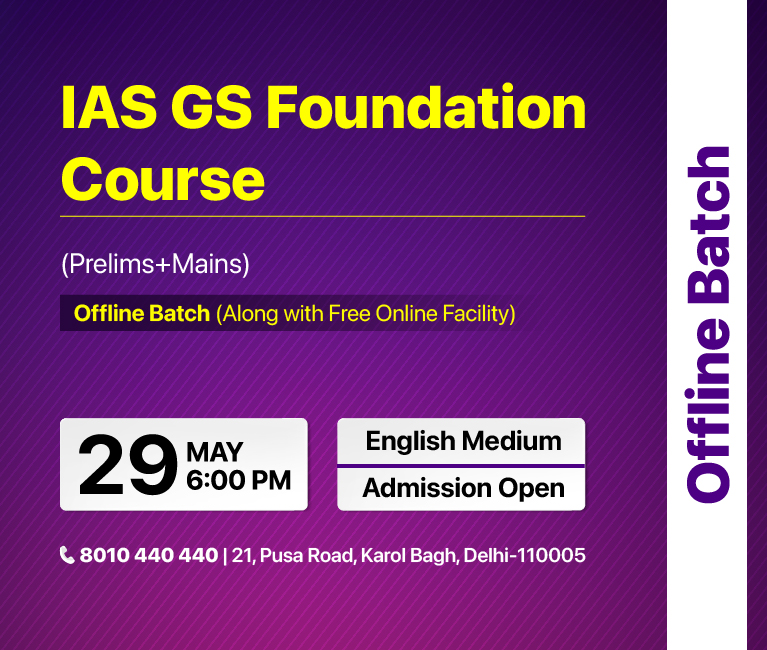
Indian Polity
Special Marriage Act, 1954
For Prelims: Special Marriage Act 1954, Inheritance rights, Muslim Marriage Act, 1954, Hindu Marriage Act 1955
For Mains: Basic Provisions of Special Marriage Act, Issues Related to SMA
Why in News?
Recently, the Madhya Pradesh High Court's decision concerning the marriage of a Muslim man with a Hindu woman, despite it being registered under the Special Marriage Act (SMA), has garnered significant attention.
- The court dismissed the couple’s petition seeking protection and assistance in registering their marriage, citing incompatibility with personal laws.
- A 'registered marriage' is a civil marriage under the SMA, solemnised in a registrar's office without religious rituals.
What is the Recent Judgement of the MP High Court?
- The petitioners had argued that since they planned to marry under the Special Marriage Act, the Islamic Nikah ceremony was unnecessary, and they intended to keep following their own religions without the Hindu petitioner converting to Islam.
- However, the High Court observed that as per Mahomedan law, the marriage of a Muslim man with a Hindu woman is not valid; even if such a marriage is registered under the Special Marriage Act, it would still be considered irregular.
- The court emphasised that personal laws override the provisions of the Special Marriage Act in this context and dismissed the couple's petition.
What is the Special Marriage Act, 1954?
- About:
- The Special Marriage Act of 1954 (SMA) governs a civil marriage where the state sanctions the marriage rather than the religion.
- Codified religious laws govern issues of personal law such as marriage, divorce, and adoption. These laws, such as the Muslim Marriage Act, 1954, and the Hindu Marriage Act, 1955, require either spouse to convert to the religion of the other before marriage.
- However, the SMA enables marriage between inter-faith or inter-caste couples without them giving up their religious identity or resorting to conversion.
- Eligibility:
- The applicability of the Act extends to the people of all faiths, including Hindus, Muslims, Sikhs, Christians, Sikhs, Jains, and Buddhists, across India.
- Some customary restrictions such as parties not being within degrees of a prohibited relationship (as per their personal laws) still apply to couples under SMA.
- The minimum age to get married under the SMA is 21 years for males and 18 years for females.
- Procedure:
- As per Section 5 of the Act, the parties to the marriage are required to give a notice, in writing, to a “Marriage Officer” of the district in which at least one of the parties has resided for at least 30 days immediately preceding the notice.
- Before the marriage is solemnised, the parties and three witnesses are required to sign a declaration form before the Marriage Officer.
- Once the declaration is accepted, the parties will be given a “Certificate of marriage” which is essentially proof of the marriage or “conclusive evidence of the fact that a marriage under this Act has been solemnised and that all formalities respecting the signatures of witnesses have been complied with”.
- “Notice Period” Under the SMA:
- As per Section 6, a true copy of the notice given by the parties will be kept under the “Marriage Notice Book” which will be open for inspection at all reasonable times, without a fee.
- Upon receiving the notice, the marriage officer shall publish it in “some conspicuous place in his office” to invite any objections to the marriage within 30 days.
- Concerns Associated with SMA:
- Objections to Marriage: Section 7 allows any person to object to a marriage within 30 days of notice publication if it contravenes conditions under Section 4, requiring the Marriage Officer to investigate and resolve the objection before solemnising the marriage, unless the objection is withdrawn.
- This can often be used to harass consenting couples and delay or prevent their marriage from taking place.
- Privacy Concerns: The requirement for notices to be published can also be seen as a violation of privacy, as it can disclose the personal information of the couple and their plans to get married.
- The Supreme Court in an oral observation, said that the mandatory 30-day notice inviting public objections to an intended marriage under the SMA is “patriarchal” and makes it “open for invasion by society”.
- Social Stigma: Inter-caste or inter-religious marriages are still not widely accepted in many parts of India, and couples who choose to get married under the SMA may face social stigma and discrimination from their families and communities.
- Objections to Marriage: Section 7 allows any person to object to a marriage within 30 days of notice publication if it contravenes conditions under Section 4, requiring the Marriage Officer to investigate and resolve the objection before solemnising the marriage, unless the objection is withdrawn.
Note:
- The Constitution of India guarantees the right to life and personal liberty under Article 21, which includes the right to marry a person of one’s choice. The Supreme Court of India has dealt with several cases involving the marriage of a person of his/her choice. Like:
- Lata Singh v. State of U.P., 2006: The Court held that the right to marry a person of one’s choice is a fundamental right under Article 21, and that no one, including the parents or the community, can interfere with or object to such marriages.
- Shakti Vahini v. Union of India, 2018: The Supreme Court held that consensually choosing life partners is a manifestation of their freedom of choice guaranteed under Articles 19 and 21 of the Constitution.
Conclusion
- The ruling by the MP High Court highlighted the complexities and conflicts arising from the interplay between personal laws and secular marriage legislation in India, underscoring the challenges faced by interfaith couples in India. Going forward, there is a need for a nuanced understanding of matrimony related legal frameworks and the socio-cultural dynamics.
|
Drishti Mains Question: Q. Discuss the challenges faced by couples seeking to marry under the Special Marriage Act, 1954, in India. Suggest potential reforms to address these issues. |
UPSC Civil Services Examination, Previous Year Question (PYQ)
Prelims:
Q. In the context of Indian history, the Rakhmabai case of 1884 revolved around (2020)
- Women’s right to gain education
- Age of consent
- Restitution of conjugal rights
Select the correct answer using the code given below:
(a) 1 and 2 only
(b) 2 and 3 only
(c) 1 and 3 only
(d) 1, 2 and 3
Ans: (b)
Q. Which Article of the Constitution of India safeguards one’s right to marry the person of one’s choice? (2019)
(a) Article 19
(b) Article 21
(c) Article 25
(d) Article 29
Ans: (b)
Mains:
Q. Explain the constitutional perspectives of Gender Justice with the help of relevant Constitutional Provisions and case laws. (2023)


Important Facts For Prelims
CPEC and Emerging Challenges at LAC
Why in News?
Following their co-chairing of the fifth Pakistan-China Foreign Ministers' Strategic Dialogue, the two leaders expressed their commitment to continue supporting each other on matters of core interest including the China-Pakistan Economic Corridor (CPEC).
- In a separate event, China has deployed advanced J-20 stealth fighters at a Tibetan airfield near the Line of Actual Control (LAC), as part of its strategy to bolster its military presence amid ongoing tensions.
What is the China-Pakistan Economic Corridor (CPEC)?
- About:
- The CPEC is a major infrastructure and development project.
- With a USD 50 billion investment in Pakistan, CPEC forms a crucial part of China's Belt and Road Initiative, aiming to establish a 3,000 km infrastructure link between Gwadar and Karachi ports in Pakistan and China's Xinjiang Uygur Autonomous Region.
- China-Pakistan plans to accelerate various projects under CPEC, including the Gwadar Port development, and the Karakorum Highway.
- The CPEC is a major infrastructure and development project.
- Opposition to CPCE:
- India opposes the CPEC as it passes through Pakistan-occupied Jammu and Kashmir (PoK) which is an integral part of India.
- Civilians in Pakistan's Balochistan province have also opposed the CPEC project, citing systematic abuses and suppression of basic freedoms.
Deployment of J-20 Stealth Fighters near LAC by China
- Satellite imagery have shown six J-20 fighters at the airfield along with ground crew and support equipment.
- China has also upgraded several airfields in the region, including Hotan, Kashgar, and Gargunsa, among others, by extending runways, building shelters, and storage facilities.
- China's deployment of J-20s is seen as an attempt to offset India's air combat advantage in the region, given India's possession of Rafale jets and other advanced aircraft.
- The Shigatse dual-use airport, located merely 155 km from the LAC and close to Doklam, holds strategic importance for China in the eastern sector facing India.
- India, in response, has Sukhoi-30MKI fighters deployed in the eastern sector, along with a squadron of Rafale jets stationed at the Hasimara air base in West Bengal.
UPSC Civil Services Examination, Previous Year Question (PYQ)
Prelims:
Q. ‘Belt and Road Initiative’ is sometimes mentioned in the news in the context of the affairs of (2016)
(a) African Union
(b) Brazil
(c) European Union
(d) China
Ans: (d)
Important Facts For Prelims
Dimensions of Colours
Why in News?
Colour profoundly shapes contemporary human life by enriching the aesthetic and symbolic aspects of our surroundings, embracing cultural diversity in its interpretation, and deepening our comprehension of the world and our role within it.
What are Colours?
- About:
- Colour is the result of processing electromagnetic radiation by the human visual system.
- Cone cells in the human eye detect and transmit information about light wavelengths to the brain, allowing for the perception of colour.
- Humans possess three types of cone cells, enabling trichromatic vision, while some animals, like birds and reptiles, have four cone types (tetrachromats).
- Human vision is limited to wavelengths range from 400 nm to 700 nm (visible light) while honeybees can also ‘see’ ultraviolet light and mosquitoes and some beetles can access information in wavelengths of infrared radiation (Humans sense it as heat).
- Science of Colours:
- Traditional colour theory, which emphasises combining 3 primary fixed colours (red, green, and blue), to make other colours.
- Modern colour theory argues that all the colours can be produced by combining any three colours in different ways.
- Two Ways of Rendering Colours:
- Additive Colouring: Mixing light wavelengths to produce different colours, as seen in electronic displays like smartphone screens and TVs, utilising the RGB colour space.
- Subtractive Colouring: Achieving colours by subtracting specific wavelengths from white light, commonly done with dyes, pigments, and inks.
- Properties of Colour:
- Hue: Degree of similarity or difference to standard colours like red, orange, yellow, etc., influencing the perceived colour.
- Brightness: Related to an object's luminance, reflecting the amount of light emitted or reflected.
- Lightness: Perception of an object's brightness compared to a well-lit white object.
- Chromaticity: Perception of colour quality irrespective of lighting conditions.
- Significance of Colour:
- Colour significantly impacts how humans perceive and interact with the world around them.
- Colour influences various aspects of human culture, including art, social hierarchy, philosophy, trade, innovation, symbolism, politics, religion, and responses to phenomena like climate change (Green washing).
- Both natural phenomena and human-made objects like paintings, gain aesthetic appeal and convey symbolic significance through colour.
- Certain colours convey universal messages (e.g., red as a stop sign).
- Examples of Colour's Impact:
- Archaeological evidence suggests early human societies used ochre pigment for cultural practices, indicating their intelligence and artistic expression.
- Blue LEDs revolutionised industries by completing the RGB colour space, enabling energy-efficient lighting solutions and advancements in consumer electronics.
Why do Patterns and Colours Appear When We Close Our Eyes?
- The appearance of patterns and colors when eyes are closed or in a dark room is an entoptic phenomenon called closed eye visualization or phosphenes.
- As part of normal cellular function, atoms in the retina absorb and emit tiny particles of photons, and the optic nerve relays these light signals to the brain.
- Even in the absence of photons, neurons in the thalamus, visual cortex, and retina are always active and can activate other visual neurons and creating patterns and colors.
- Depending on where a phosphene originates (retina, thalamus, or visual cortex), it can take on various shapes, patterns, and colors.
- Phosphenes can also be generated by mechanical stimulation, metabolic stimulation like (low blood pressure), magnetic or electrical stimulations, and certain drugs like psilocybin.
- When the brain cannot make sense of the reconstructed image, it quickly labels it as a phosphene.
Read more: Camera Shows How Animals See Motion.
UPSC Civil Services Examination, Previous Year Questions (PYQs)
Prelims:
Q. Rainbow is produced when sunlight falls on drops of rain. Which of the following physical phenomena are responsible for this? (2013)
- Dispersion
- Refraction
- Internal reflection
Select the correct answer using the codes given below:
(a) 1 and 2 only
(b) 2 and 3 only
(c) 1 and 3 only
(d) 1, 2 and 3
Ans:(d)


Rapid Fire
Leading Edge Actuators & Airbrake Control Module
Recently, the Defense Research and Development Organisation (DRDO)’s Aeronautical Development Agency (ADA) handed over the first batch of the indigenous Leading Edge Actuators and Airbrake Control Module to Hindustan Aeronautics Limited (HAL).
- The successful completion of flight trials for Leading Edge Actuators and Airbrake Control Modules has paved the way for production clearance, enabling HAL to gear up for equipping the Mk-1A variant of Light Combat Aircraft -Tejas.
- It used to control the leading edge slats on aircraft wings.
- These are developed in collaboration with Research Centre Imarat (RCI), Hyderabad, and Central Manufacturing Technology Institute (CMTI), Bengaluru.
- RCI is a Hyderabad based (DRDO) premier lab.
- CMTI is a Research & Development organization under the aegis of the Ministry of Heavy Industries.


Rapid Fire
Exchange Traded Funds
Hong Kong has launched Asia's first Spot Bitcoin and Ether Exchange-Traded Funds (ETFs) in a step toward becoming a Virtual Asset Investment Hub of the Region.
- Bitcoin is the world's first and most well-known Cryptocurrency.
- Cryptocurrency is a type of digital or virtual currency that uses cryptography for security and operates on decentralised networks based on blockchain technology.
- Spot Bitcoin refers to the immediate purchase or sale of Bitcoin at the current market price.
- It involves real-time transactions where buyers and sellers exchange Bitcoin for fiat currency (such as US dollars) or other cryptocurrencies.
- Exchange-traded funds (ETFs) are investment funds that are traded on stock exchanges, much like individual stocks.
- They are designed to track the performance of a particular index, commodity, currency, or a mix of asset classes.
- ETFs offer investors a way to diversify their portfolios without having to buy individual securities.
- The ETFs can be traded in both Hong Kong Dollars and US dollars, and also in the Chinese Yuan.
- Hong Kong ETFs might encourage other nations to approve Cryptocurrency ETFs and could help promote the wider adoption of digital assets.
Read more: Cryptocurrency


Rapid Fire
Indian Army Received Hydrogen Buses
Recently, the Indian Army has collaborated with Indian Oil Corporation Limited (IOCL) for demonstration trials of Hydrogen Fuel Cell Bus technology.
- The Indian Army also received its first Hydrogen Fuel Cell Bus, marking stride towards cleaner and greener transport solutions.
- Bus has a seating capacity of 37 passengers and a mileage of 250-300 km on a 30 kg onboard Hydrogen fuel tank.
- Earlier, on 21st March 2023, the Indian Army became the first government entity to sign an MoU with NTPC Renewable Energy Ltd for installation of Green Hydrogen based Microgrid Power Plants along the Northern Borders.
- Hydrogen fuel cell technology provides a clean and efficient solution. It generates electricity through a reaction between hydrogen gas and oxygen, with water vapour as the sole byproduct.
- This makes it a compelling alternative to traditional fuels, especially considering the abundance of hydrogen on Earth.
Read more: Hydrogen Fuel Cell, India's first Indigenous Hydrogen Fuel Cell Ferry, First Green Hydrogen Fuel Cell Bus


Rapid Fire
Evacuation Slides
An evacuation slide is an inflatable slide that allows passengers to safely exit the flight during an emergency, especially when the flight door is high above the ground.
- Types of evacuation slides:
- Inflatable Slide: It helps passengers descend from aircraft exit doors to the ground. It can also be used from aircraft wings in emergencies.
- Inflatable Slide/Raft: It performs the same function as the slide but can also be used as a life raft if the aircraft lands on water.
- Inflatable Exit Ramp: Installed to assist passengers moving from certain overwing exits to the wings for better access to the ground.
- Inflatable Exit Ramp/Slide: A combination device used to descend from overwing exits or aircraft wings to the ground.
- Evacuation slides, crafted from fire-resistant nylon coated with urethane and reinforced with strong carbon fibres, prevent tearing during descent.
- An evacuation slide, meeting regulatory guidelines, must deploy automatically when the door is opened, inflate within 6-10 seconds, and withstand extreme temperatures, heavy rainfall, and high winds.
Read more: India's Aviation Industry


Rapid Fire
Dissolution of the 17th Lok Sabha
The Union Cabinet chaired by the Prime Minister recommended the dissolution of the 17th Lok Sabha.
- According to Article 83(2) of the constitution, the completion of five years from the first day of its meeting amounts to the dissolution of the Lower House of Parliament.
- A dissolution ends the very life of the existing House and a new House is constituted after general elections are held.
- However, the Lower House can also be dissolved earlier by the President on the advice of the Prime Minister.
- It can also be dissolved if the President feels that no viable government can be formed after the resignation or fall of the previous government.
- Rajya Sabha, being a permanent House, is not subject to dissolution.
Read more: Lok Sabha



